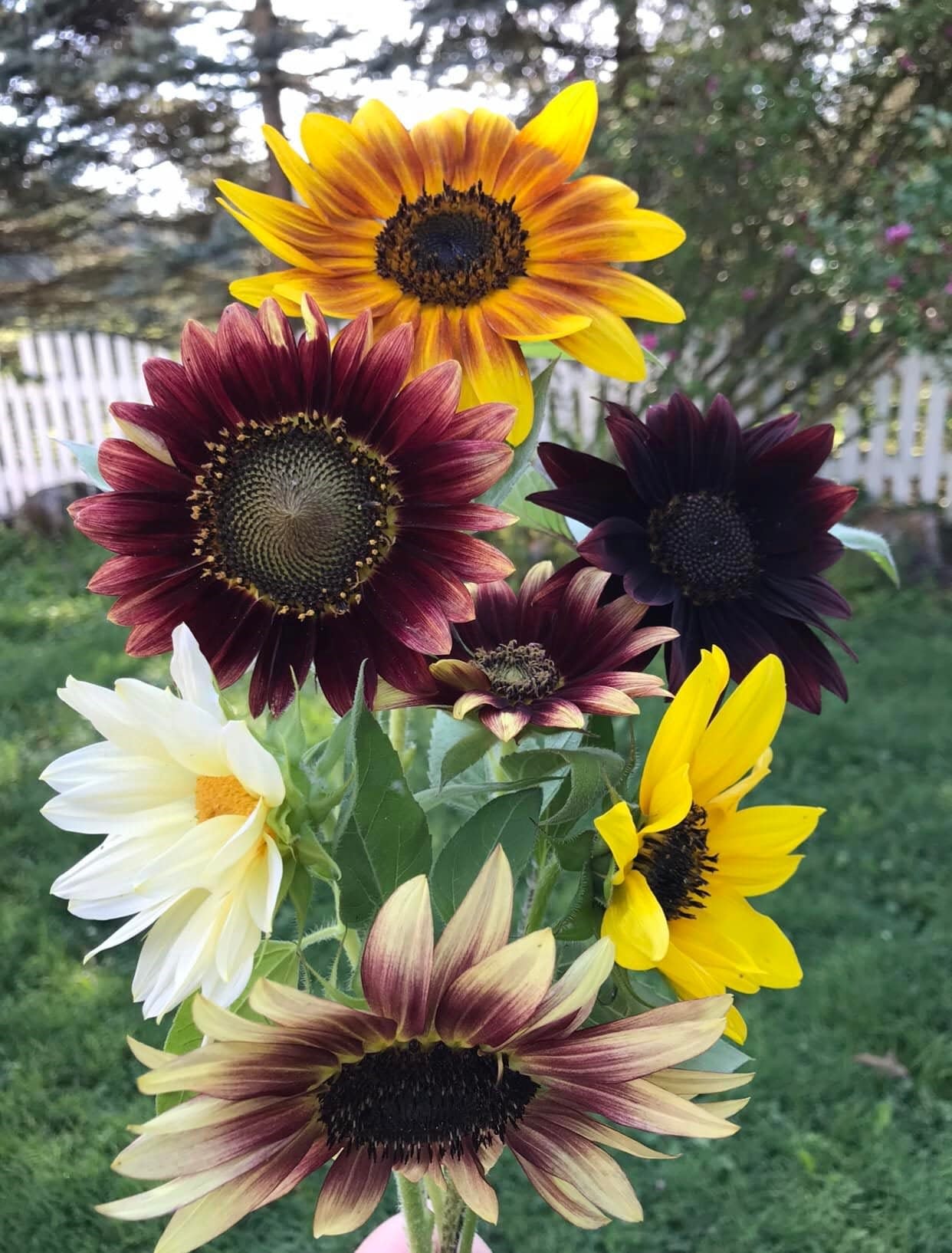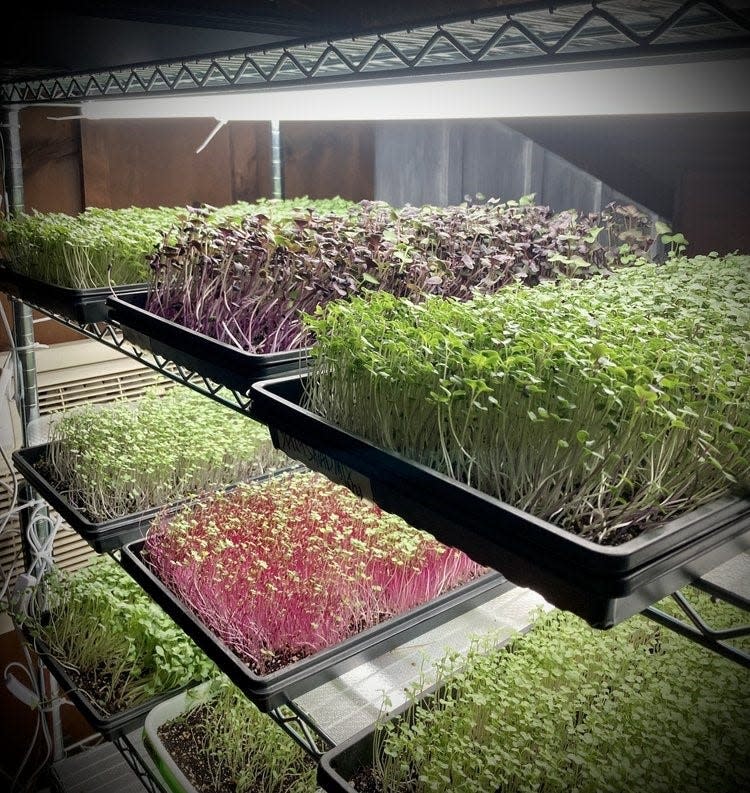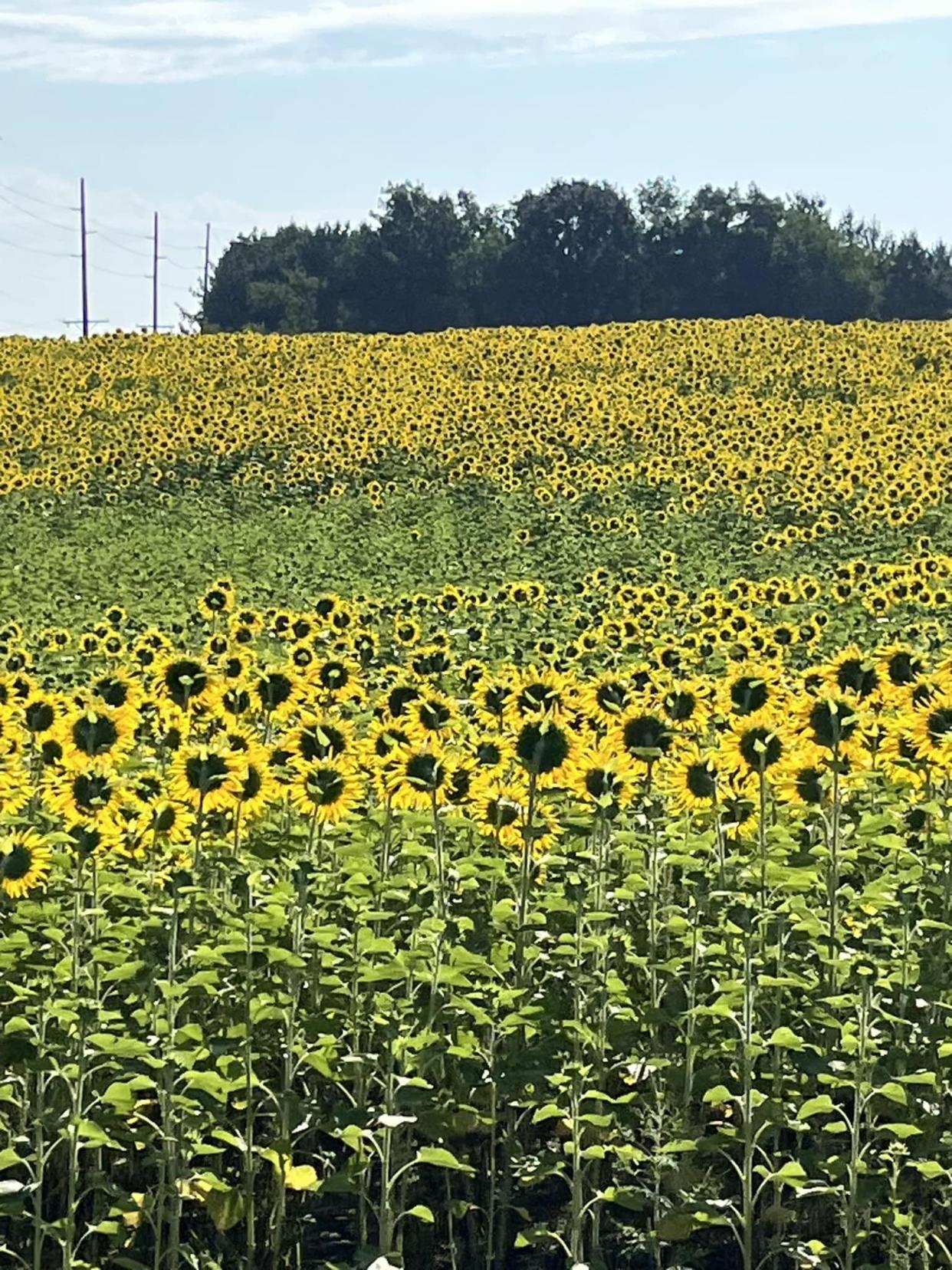A Stroll Through the Garden: Sunflowers bring beauty and butterflies to your garden
I was exercising at the pool a few weeks ago and talked to a lady who asked me about sunflower care. One of the reasons she said she liked sunflowers is that their care is relatively easy. She also liked the wide variety of the flowers in size and color.
My experience with them has been in placing smaller sunflowers in vases the greenhouse had in the gardens we had for cut flowers. I remember we would use them for arrangements on plant rental clients' tables so the beauty of these plants could also be shared when the season was ripe. What I like is that our plant breeders are working on having smaller flowers so they could be used in table arrangements.

Last week I had the opportunity to listen to Seth Meehan at both a master gardener meeting and at a Raising Richland program that helps people understand a number of garden-related topics. There were many people at the Raising Richland event at Kingwood Center, and I enjoyed the programs and booths. What I find important is these presenters were telling us about how a person could earn a living in agriculture. This was a family event, and we saw children and a wide variety of people.
Meehan spoke about his business, High Desert Greens, and how he raised a number of different crops and brought them to market. This talk reminded me of the tomato hydroponic business my brother had many years ago, with some major differences. Meehan raised his sunflowers with peas so he might be able to bring this combination of peas and sunflowers to market in 10 days. Try to do that at home. You can.
Getting started with seeds or plants
Meehan raised his sunflowers with the purpose of selling just the seedlings as compared to the way my family would raise sunflowers in our greenhouse and garden. When I was a kid, I don’t remember my folks ever buying a sunflower in a pot or a six-pack on a flat to be planted in a garden. That has changed. We all can go to one of our local greenhouses and find sunflowers in many forms. Seed has been the traditional way you would find sunflowers, but today you will find those six-pack greenhouse containers and pots that have sunflowers planted in them. We don’t even call sunflowers the same name. Sunflowers now are called helianthus. These exciting sunflowers/helianthuses are considered one of the most popular flowers.
A sunflower is a plant you probably will not have many challenges to grow. Seeds can be planted following the label instructions on the seed pack in normal garden soil. The bottom line is that growing sunflowers is easy because they are heat-tolerant, pest-resistant and fast growing. As I can recall, I've seen as tall as 14-foot Russian mammoth sunflowers with 8-inch to 14-inch flowers. Imagine all of that sunshine in one flower.

Soil, water and sunlight are factors to consider
These sun-loving flowers do their best in nutrient-rich soil because they are heavy feeders. Compost and other organic matter are important. Sunflowers have long tap roots that go several feet into the soil and do the best with well-drained, somewhat sweet or alkaline soil with a pH from 6.0-7.5. You can plant these sunflower seeds directly in the soil when the threat of a spring frost has passed and soil temperatures have reached 60 degrees. You might become concerned if you have planted a large, 10-foot plant in a small pot. Other than this, planting sunflower seeds is easy and of great value because of the many different varieties.
Microgreen sunflowers are different in that they can be eaten much sooner than waiting on the seeds to develop and eating them. High Desert Greens is not really a greenhouse operation, according to Meehan, but a grow room. These microgreens were grown on carts with artificial lights and were harvested generally in 10 days after planting. Meehan plants these 10-inch-by-20-inch trays with 250 grams of seeds.
They begin by soaking the sunflowers for 8 hours to 24 hours in water covering the seeds to speed germination. Spread one inch of moist standard potting soil to cover the bottom of this tray. The soaked seeds then are spread evenly across the soil. For an even-growing tray, we aim for a single layer of seeds to reduce overcrowding. To increase better germination and better soil contact, Meehan places a tray on top of the seeds. On top of the final tray, he places a paver to hold down the seeds as the shell pops. Meehan said seeds normally expand so much they push the top tray off. For the first two to three days, the seeds need to be in the dark. After that, expose the seeds to sunlight.

I suppose you have been waiting for a surprise. Well, here we go. Sunflower microgreens are nutty tasting. Our sunflower microgreens are highly nutritious and can help lower blood cholesterol, regulate hormones and provide essential amino acids. Microgreens are low in calories, and they have a high content of vitamins A, B, D and E. They also contain beta-carotene, lutein, calcium, magnesium, potassium and phosphorous.
Hope that you have a great stroll through your garden today and enjoy the daffodils, cornelian cherry dogwood and maple that are in bloom. If you have a challenge, drop me a line at ericlarson546@yahoo.com. Thank you for your participation in our column. Soon you can find a link in my website ohiohealthyfoodcooperative.org.

Eric Larson of Jeromesville is a veteran landscaper and gardening enthusiast and a founding board member of the Ohio Chapter of Association of Professional Landscape Designers.
This article originally appeared on Mansfield News Journal: Tips for growing sunflowers from seed in Ohio
